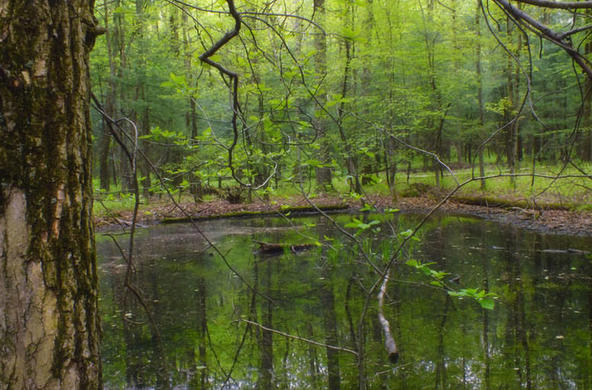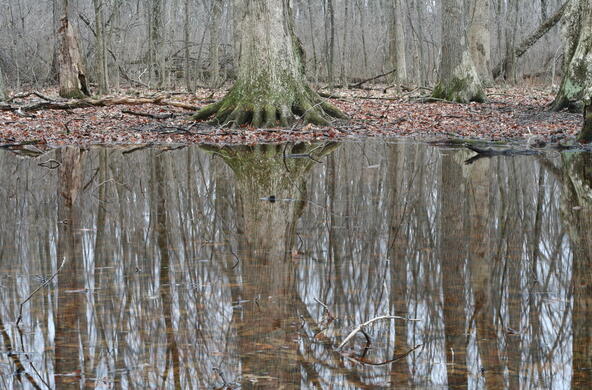HYDE PARK— When officials at the Dutchess County Society for the Prevention of Cruelty to Animals decided to build a new adoption and education center, they knew the site's aging septic system could not handle the added load.So the Dutchess SPCA chose a system that uses man-made wetlands to treat wastewater.
Complicating the matter was the physical nature of the 32.6-acre site. Most of the property contains state and federally regulated wetlands. But thanks to some creative engineering, the project is moving forward.
"We are really excited because it fits our mission," Dutchess SPCA Development Director Catherine Forbes said. "It fits who we are, how we want to be as neighbors and how we want to protect the wildlife."
Two small beds of common reeds and grasses are in place. Three other beds are under construction.
The system was designed by New England Waste Systems, based in Leeds, Mass. It seeks to replicate the water purification process that occurs in natural wetlands. Only two other systems have received permits from the state Department of Environmental Conservation — the Omega Institute in the Town of Clinton and the Fishkill-East Fishkill Joint Landfill.
Waste travels first to large tanks, where most solids settle and are eventually pumped out. Next stop is a vegetated sand bed. Bacteria-laden gravel traps and treats waste. Clays and peat moss add a polishing process.
Cattails, reeds and other plants further filter solids by taking up nutrients, metals and other substances. Other living processes — from protozoa to frogs and birds — consume and otherwise break down waste.
What's left is water that is clean, albeit not potable. At the Dutchess SPCA, the water was the problem. Engineers wanted to discharge the treated effluent into the wetland. The DEC said no.
So engineers have designed a piggyback infiltration system, similar to a conventional leach field, underneath the artificial wetlands. The purified water will drain through a synthetic membrane liner into the infiltration network and then percolate back into the groundwater.
“It’s the first piggyback system that we have built like this,” said Ron Lavigne, president of New England Waste Systems.
Stuart Findlay, an aquatic ecologist at the Cary Institute of Ecosystem Studies in Millbrook, cautioned that artificial wetlands often use some invasive species such as the common reed (Phragmites australis). At least one of the Dutchess SPCA’s beds has this species.
But Findlay noted the common reed is already present in the mid-Hudson Valley and Lavinge said the reed is already growing in the wetlands on the Dutchess SPCA property.
“We try to be sensitive of the wishes of conservation … people,” Lavigne said. “I don’t get too excited over Phragmites because it is nowhere near as invasive as people would have you believe. Most of the seeds are nonfertile, and they won’t spread by normal seed propagation.”
Artificial wetlands offer several advantages, including reduced chemical and energy use. They also take less maintenance and have some habitat value, Findlay said.
“I am a big fan of these things,” Findlay said. “Compared to building a little (treatment) plant — and given that the effluent coming in is just pet poop, and not horrible stuff — it seems like a good use.”





